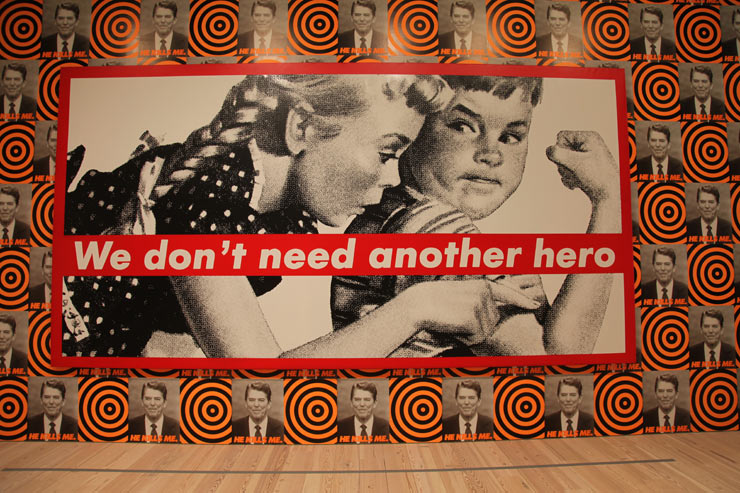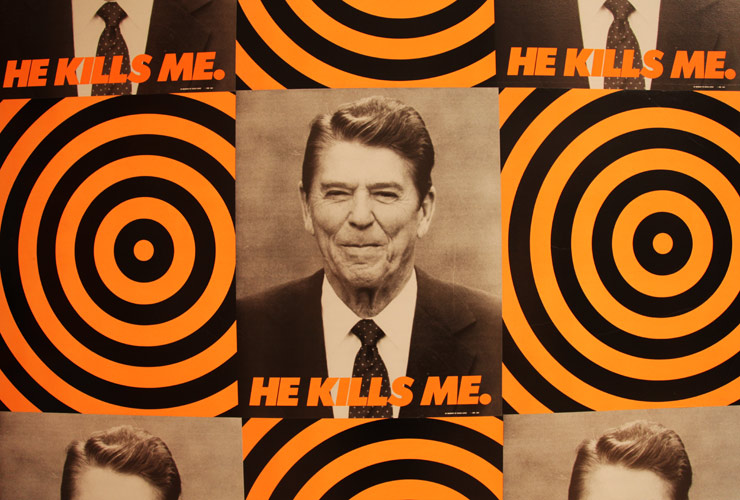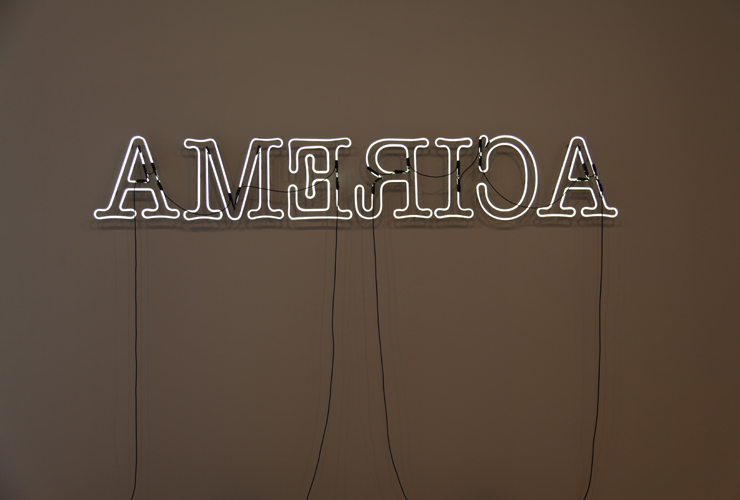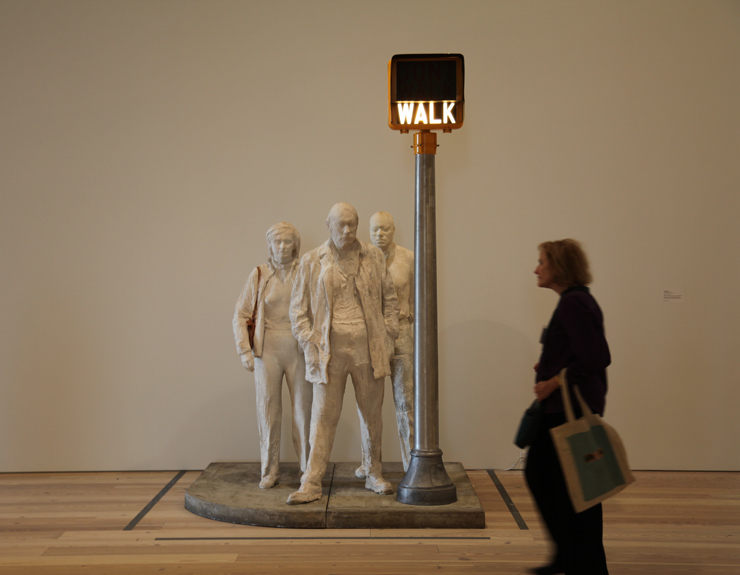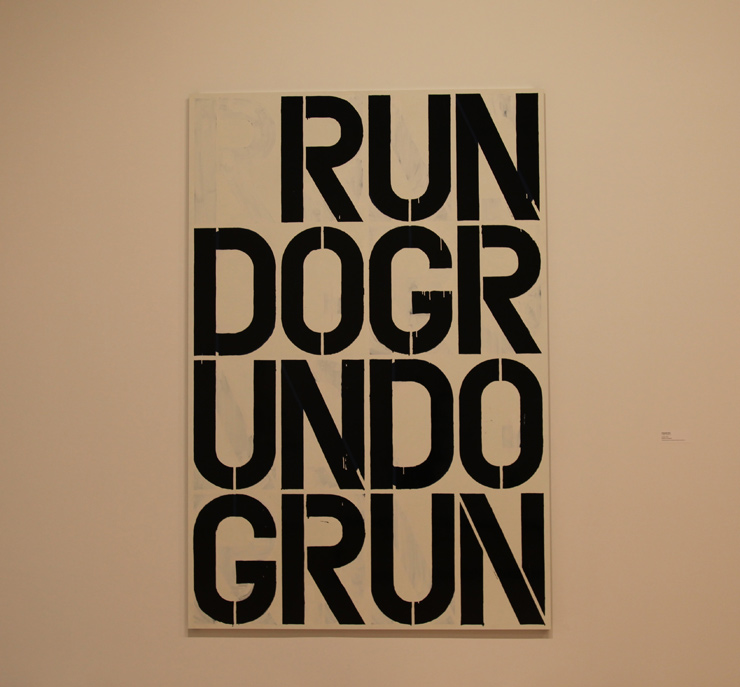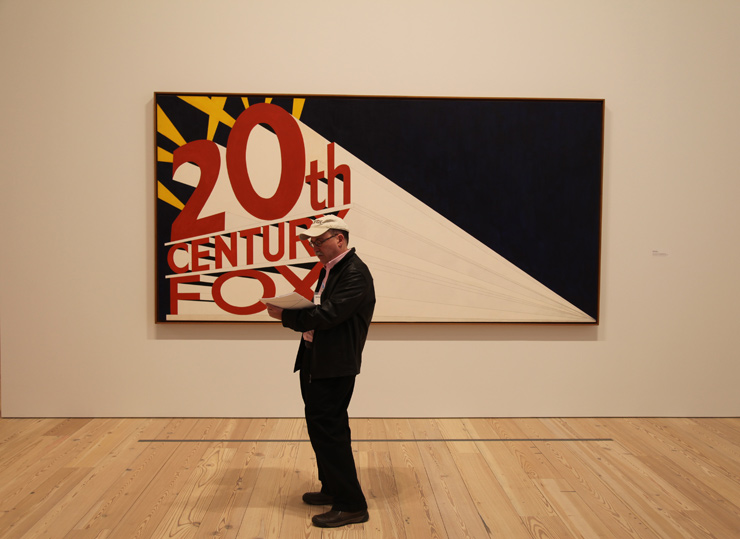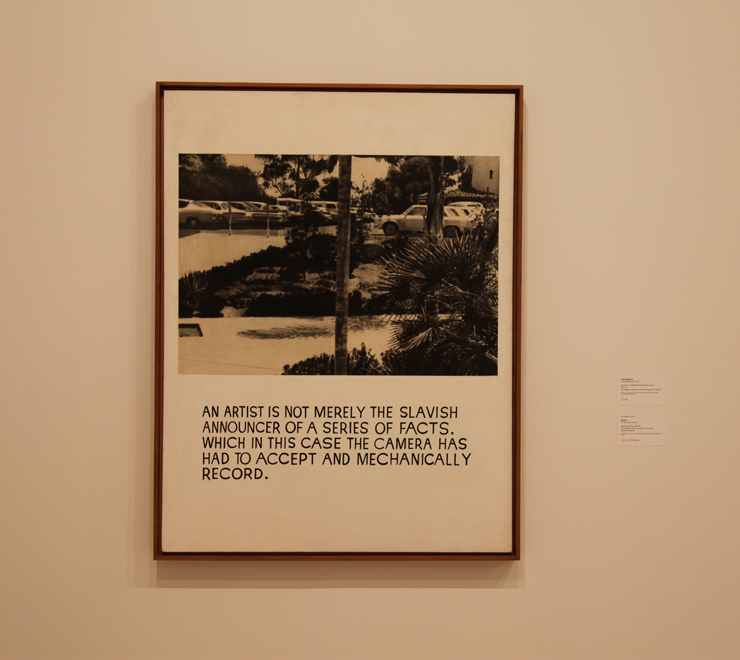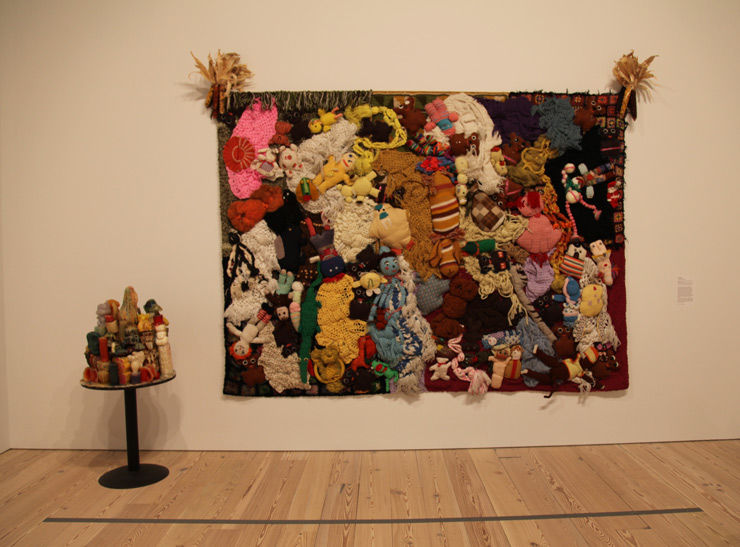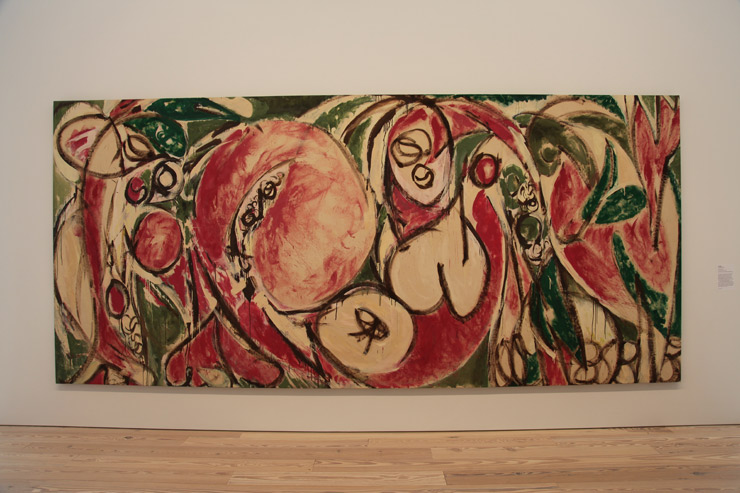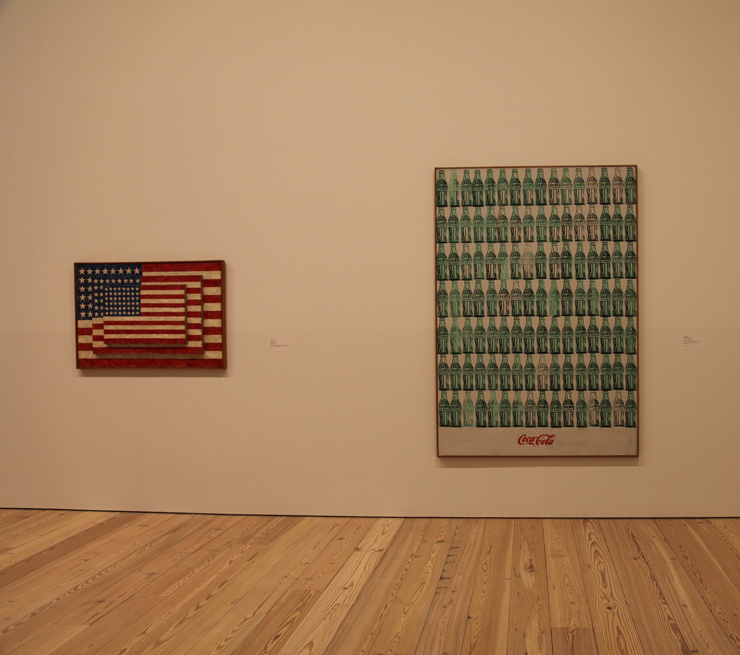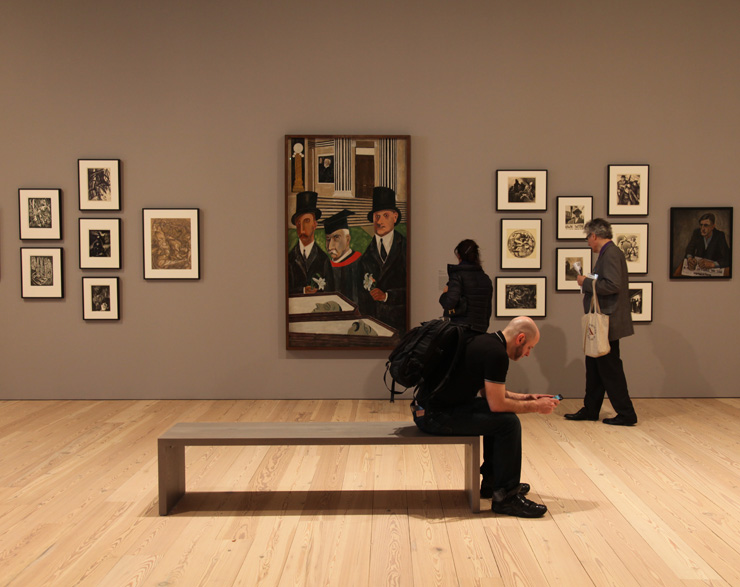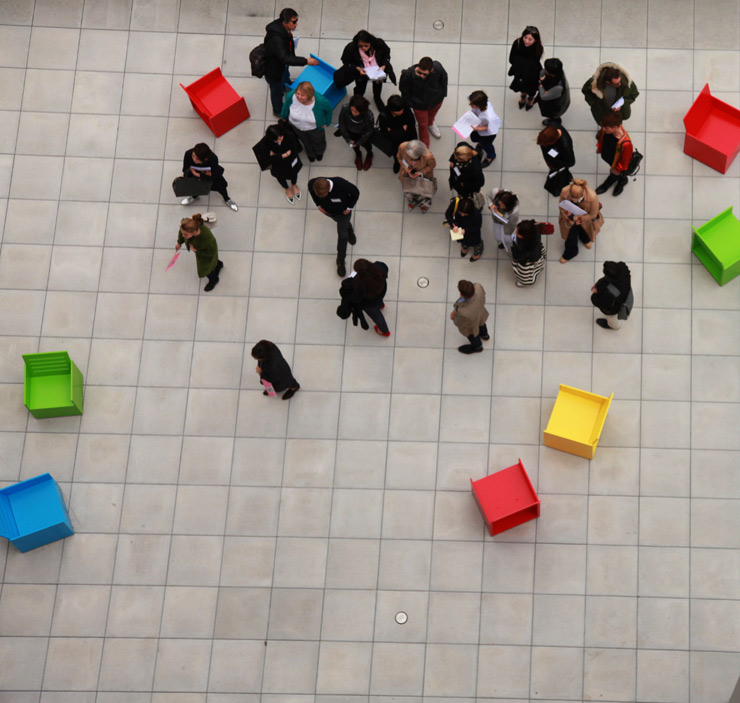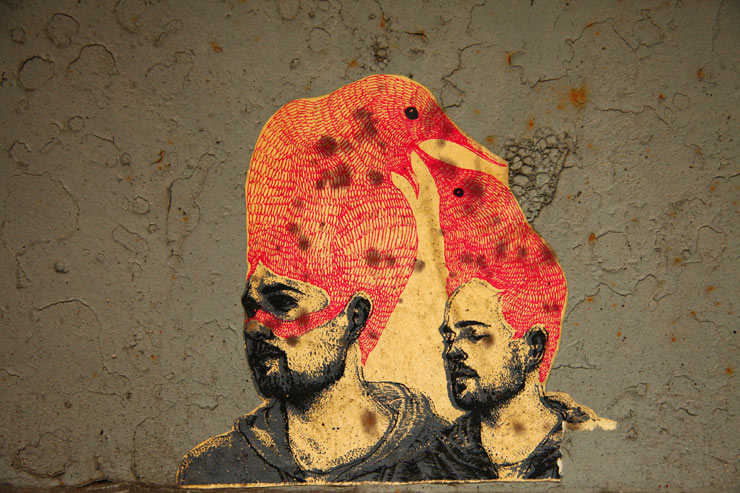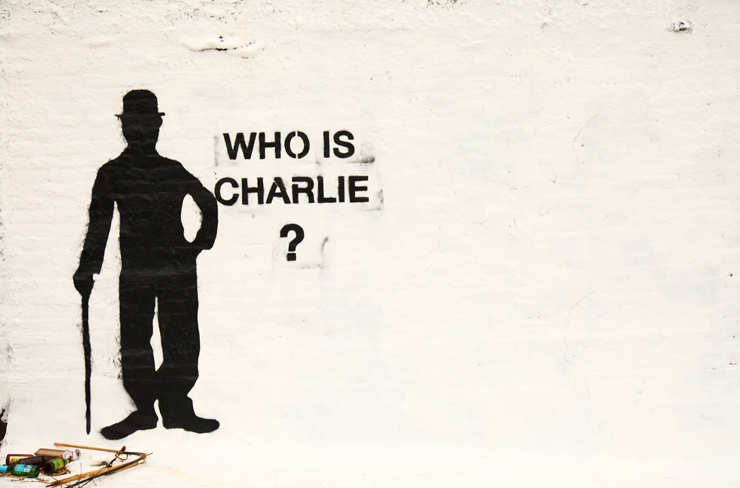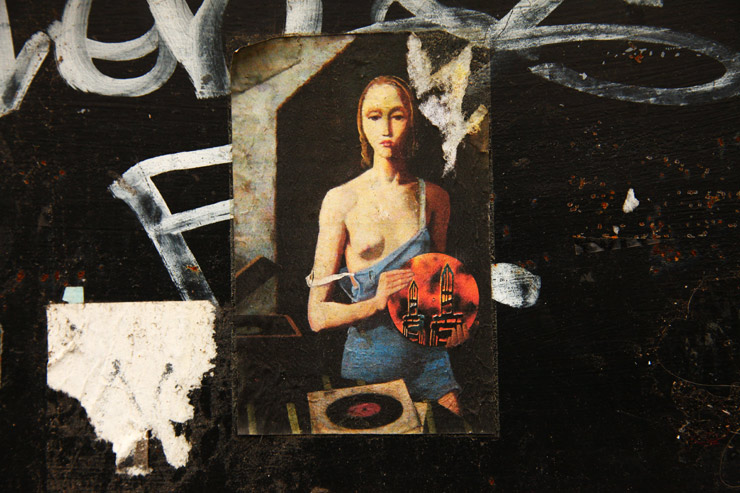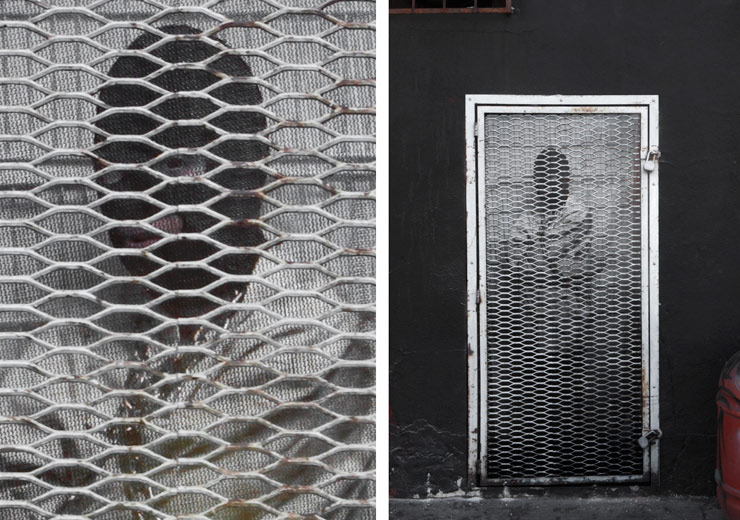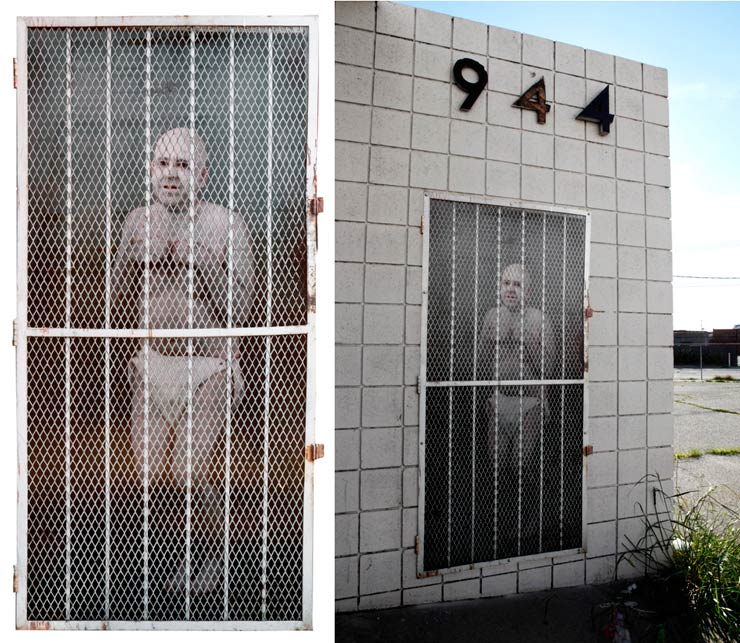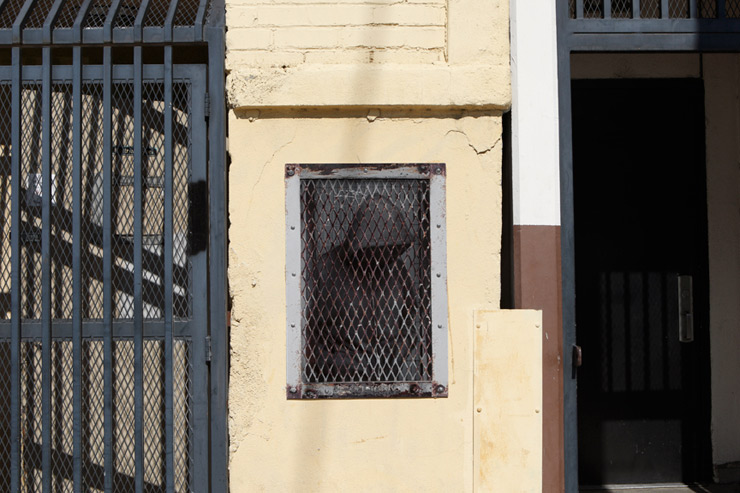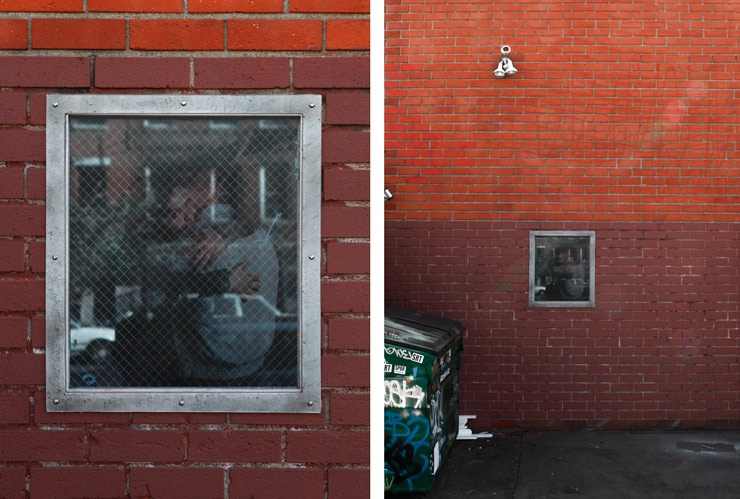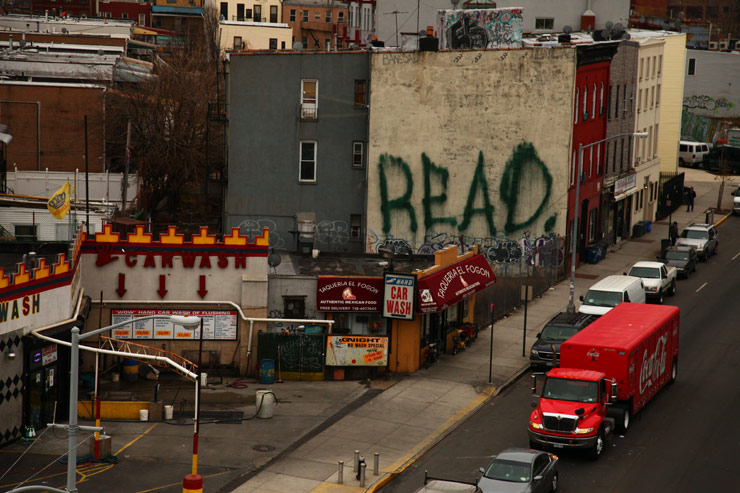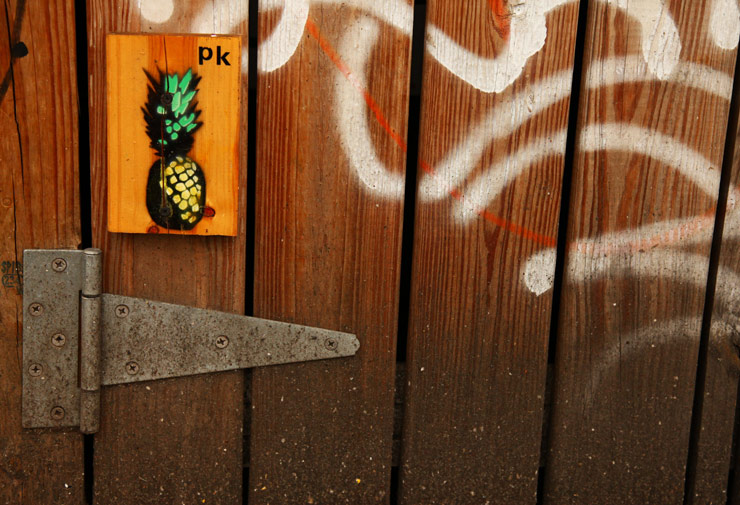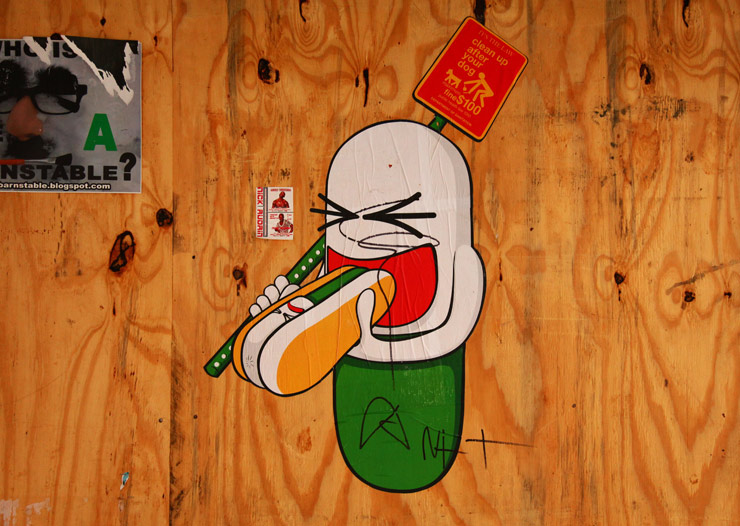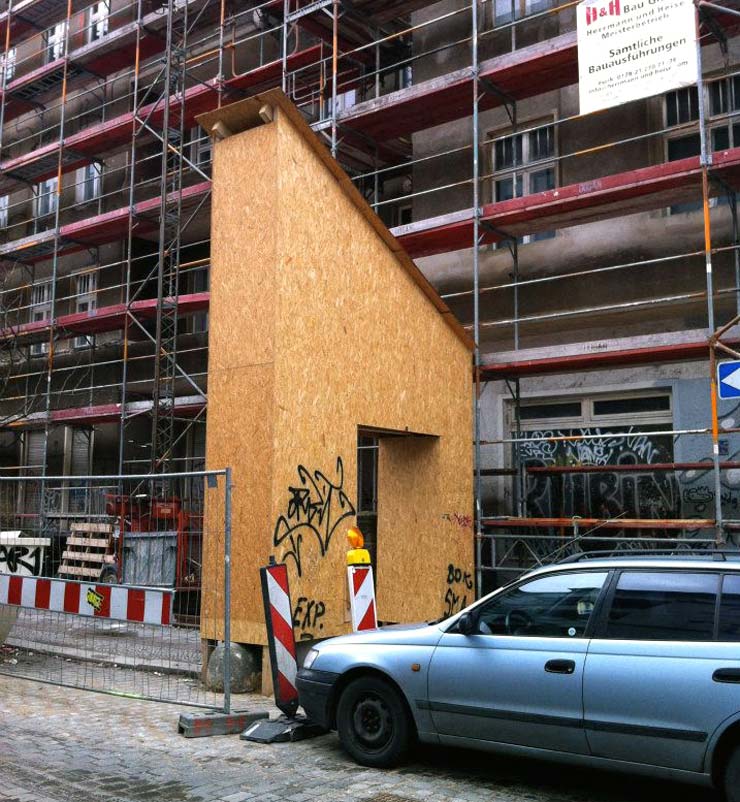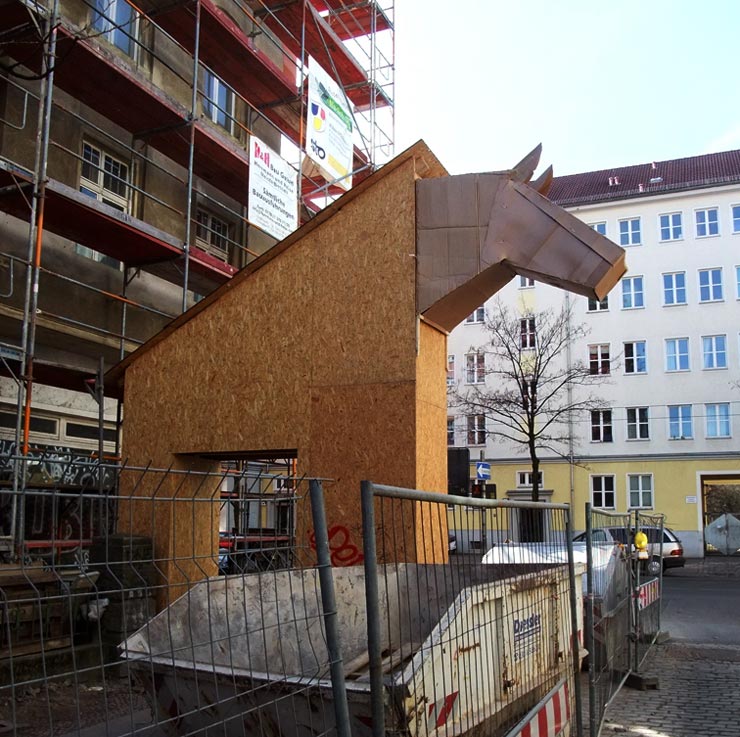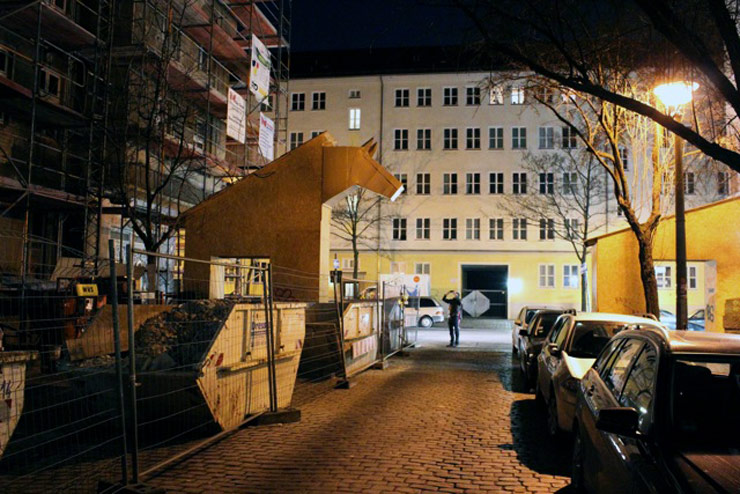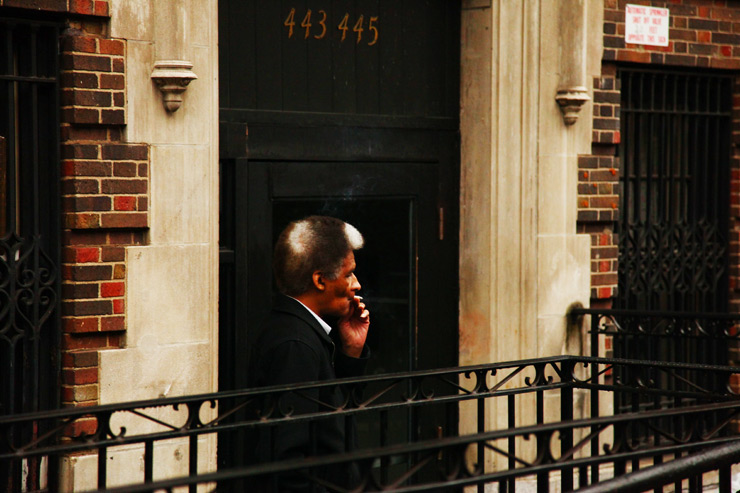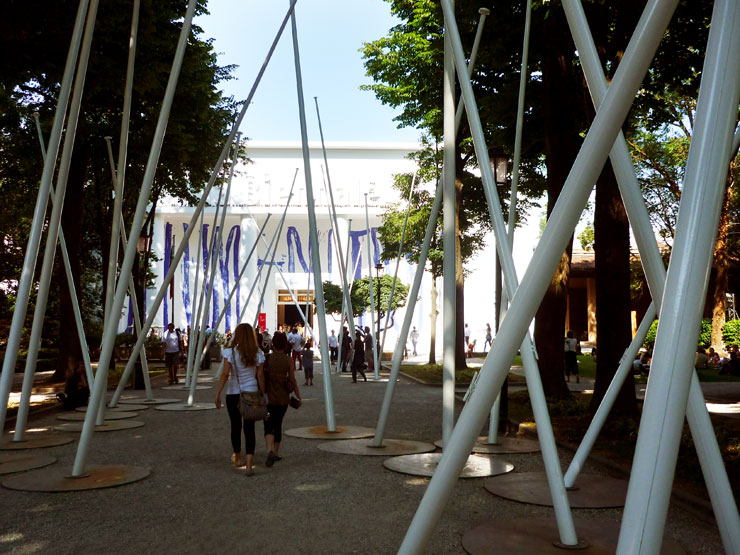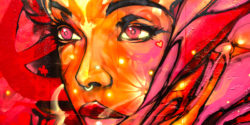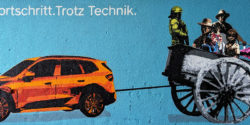The stunning new Whitney Museum opens tomorrow, May 1st, in the Meat Packing District of lower Manhattan and you will be overwhelmed to see the last 115 years or so of artistic expression in America on display for the exhibit “America Is Hard To See”. 400 artists of every discipline and many art movements during your life and your great grandparents are here – from film and video to painting and sculpture and new media and photography, from abstract, figurative, text based, landscapes, and our own visual jazz – abstract expressionism – you’ll be exhausted when you are through with this show.
You’ll also be energized by the sense of sheer possibility presented – and the amount of space and the many outdoor plaza views. This is a new jewel in New York, and you have discovered it.
Donal Moffett. He Kills Me, 1987. The artist printed this poster and wheat pasted it on walls across New York City as a critique of President Reagan’s silence towards the AIDS epidemic. (photo © Jaime Rojo)
We don’t get a new museum every day, but tomorrow you do, and it is rather spectacular to be privileged this way in this city of constant change. No matter your perspective, you will find the inaugural show to be vast. You are certain to like or disagree or applaud or dish with someone here, and it is all strangely American – Here is just a partial sampling of names showing about 600 works that should whet your appetite; Vito Acconci, Ansel Adams, Diane Arbus, Rory Arcangel, John Baldessari, Mathew Barney, Jean-Michel Basquiat, Louise Bourgeois, Paul Cadmus, Alexander Calder, Chuck Close, Imogen Cunningham, Willem de Kooning, Mark di Suvero, Elsie Driggs, William Eggleston, Anna Gaskell, Milton Glaser, Nan Goldin, Felix Gonzalez-Torres, George Grosz, Keith Haring, Eva Hesse, Edward Hopper, Robert Indiana, Jasper Johns, Donald Judd, Mike Kelley, Jeff Koons, Barbara Kruger, Louise Lawler, Sherrie Levine, Sol LeWitt, Roy Lichtenstein, Rober Mapplethorpe, Gordon Matta-Clark, Paul McCarthy, Joan Mitchell, Donal Moffett, Louise Nevelson, Georgia O’Keefe, Jose Clemente Orozco, Nam June Paik, Jackon Pollock, Richard Prince, Christina Ramberg, Robert Raushenberg, Hans Richter, Mark Rothko, Edward Ruscha, David Salle, Dread Scott, Richard Serra, Cindy Sherman, Lorna Simpson, Kiki Smith, Frank Stella, Hedda Sterne, Alfred Stieglitz, Rirkrit Tiravanjia, Anne Truit, Cy Twombly, Kara Walker, Andy Warhol, Weegee, William Wegman, Gertude Vanderbuilt Whitney, David Wojnarowicz, Francesca Woodman, Andrew Wyeth.
Barbara Kruger. Untitled. (We Don’t Need Another Hero), 1987. (photo © Jaime Rojo)
You’ll look through that list and want to add some of your own of course, everyone does. Despite the revered Biennial which periodically bowls you over with new talent, some still find that there are not enough of certain social groups represented, and that is probably fair.
We find it somewhat alarming that 50+ years of graffiti and street art is only minimally represented here – especially when it has become one of the hugely praised cultural exports to cities around the world and it is highly collected and ever-more auctioned. Talk about American! New York is considered a birthplace for the urban art scene and we can recommend a short list of these artists who are daily defining a new contemporary art for serious consideration. Yes this show has Haring, Basquiat, Kruger – acknowledged. But a great deal has happened in the last two decades. Maybe now that formally trained artists are frequently killing it on the streets in the 2000s and 2010s we will see more of these names included as part of the American story in the future. In fact, there is no doubt.
Glenn Ligon. Ruckenfigure, 2009 (photo © Jaime Rojo)
The striking new modern home by Renzo Piano is twice the size of the old one and some of the views from the museum of this city that you love may rob your attention briefly from the art displayed inside. The inaugural show up until September is called America is Hard to See, and at $22 a ticket, so is the new Whitney Museum of American Art. That price may not seem like much when you consider it would get you four hours rent in a market rate one-bedroom in this neighborhood. But in a city where workers are fighting for a $15 minimum wage we’d like to see it accessible to more New Yorkers as it is the preeminent institution devoted to the art of the United States. Just had to say it. Hopefully they will find a way to institute frequent “pay what you want” nights, and to be fair, students get in FREE every day.
But this is your museum, and we hope you add your voice to the discussion.
Meanwhile, join us as we say “Welcome to the New Whitney!”
George Segal. Walk, Don’t Walk, 1976 (photo © Jaime Rojo)
George Segal. Walk, Don’t Walk, 1976 (photo © Jaime Rojo)
Christopher Wool. Untitled, 1990 (photo © Jaime Rojo)
Edward Ruscha. Large Trademark with Eight Spotlights, 1962 (photo © Jaime Rojo)
John Baldessari. An Artist Is Not Merely the Slavish Announcer, 1966-68 (photo © Jaime Rojo)
Mike Kelly. More Love Hours Than Can Ever Be Repaid and The Wages of Sin, 1987 (photo © Jaime Rojo)
Lee Krasner. The Seasons, 1957 (photo © Jaime Rojo)
From left to right: Jasper Johns, Andy Warhol. (photo © Jaime Rojo)
General view of one of the galleries. Detail. (photo © Jaime Rojo)
Mary Heilmann. Sunset, detail. Site specific installation. 2015 (photo © Jaime Rojo)
The back yard. The view from the back of the building. (photo © Jaime Rojo)
<<>>><><<>BSA<<>>><<<>><><BSA<<>>><><<>BSA<<>>><<<>><><BSA
Please note: All content including images and text are © BrooklynStreetArt.com, unless otherwise noted. We like sharing BSA content for non-commercial purposes as long as you credit the photographer(s) and BSA, include a link to the original article URL and do not remove the photographer’s name from the .jpg file. Otherwise, please refrain from re-posting. Thanks!
<<>>><><<>BSA<<>>><<<>><><BSA<<>>><><<>BSA<<>>><<<>><><BSA
 BROOKLYN STREET ART LOVES YOU MORE EVERY DAY
BROOKLYN STREET ART LOVES YOU MORE EVERY DAY